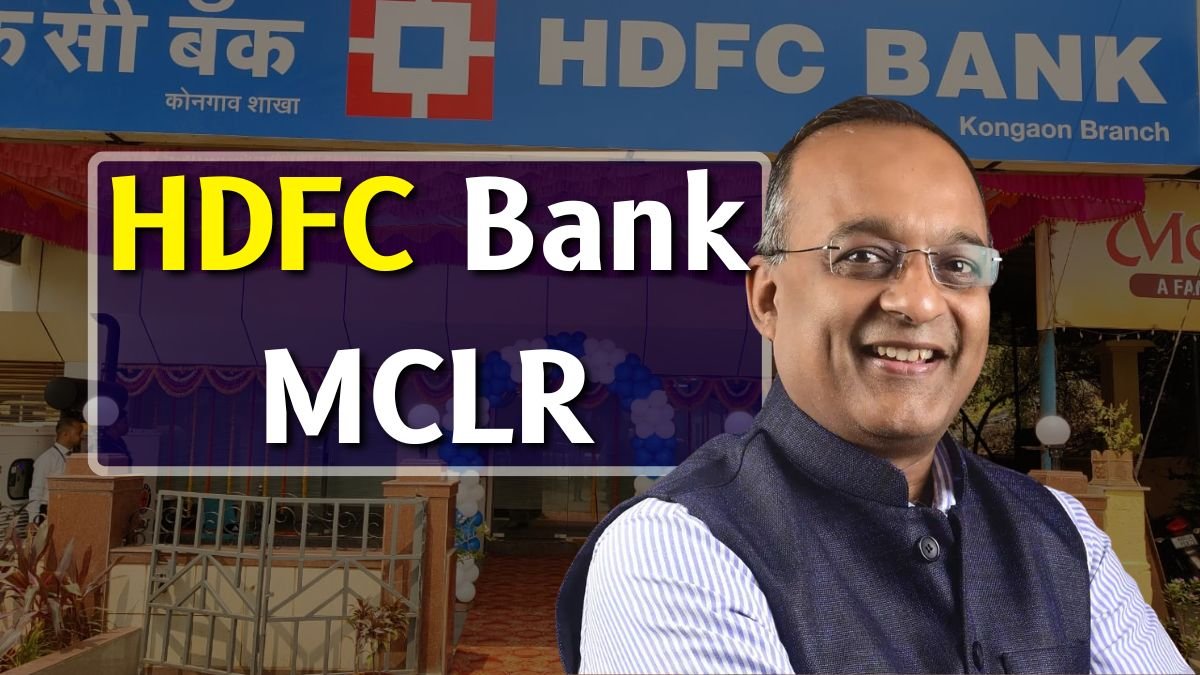If you’ve been feeling anxious every time your EMI date rolls around, you’re definitely not the only one. But here’s a little ray of hope: HDFC Bank just made a move that could ease your financial pressure—and it’s already in effect from June 7, 2025.
What Did HDFC Bank Just Announce?
MCLR Reduced by 0.10% – Here’s Why That Matters
HDFC Bank—the country’s largest private sector bank—just reduced its MCLR (Marginal Cost of Funds-Based Lending Rate) by 0.10% across all tenures.
If that sounds too technical, here’s what it really means:
Lower MCLR = Lower interest rates on floating loans
Lower interest = Lower EMIs for you
So yes, this tiny-sounding change could actually save you a lot of money over time, especially if you have a home, car, or personal loan.
New HDFC Bank MCLR Rates (Effective June 7, 2025)
| Loan Period | New MCLR | Old MCLR |
|---|---|---|
| Overnight | 8.90% | 9.00% |
| 1 Month | 8.90% | 9.00% |
| 3 Months | 8.95% | 9.05% |
| 6 Months | 9.05% | 9.15% |
| 1 Year | 9.05% | 9.15% |
| 2 Years | 9.10% | 9.20% |
| 3 Years | 9.10% | 9.20% |
Even a 0.10% cut might not seem like a big deal upfront, but over the lifespan of your loan, it adds up to serious savings.
How Does This Help You?
If your loan is on a floating interest rate, this update could:
- Reduce your current EMIs
- Make future loans more affordable
- Save you thousands in interest over time
Let’s say you have a 20-year home loan of ₹30 lakh. Even a 0.10% rate reduction can reduce your EMI by ₹200–₹300 per month—that’s over ₹60,000 in savings over the loan period.
Why Did This Happen?
This MCLR cut comes right after the RBI reduced the repo rate by 0.50%. When the central bank reduces the repo rate (the rate at which it lends to banks), banks get cheaper funds and pass on that benefit to you through lower MCLR.
Here’s what goes into setting the MCLR:
- Interest rates on deposits
- Repo rate
- Operational costs
- CRR (Cash Reserve Ratio)
So yes, a lot of math goes on behind the scenes—but the benefit is real and immediate.
What You Should Do Now
Here’s a quick action plan:
- Check your current loan type – Is it on a floating rate? If yes, you’re likely to benefit.
- Reach out to HDFC – Ask if your loan will auto-adjust or if you need to request the new MCLR.
- Compare other loan options – If you’re planning a new loan, now’s a good time to compare and lock in lower rates.
- Consider refinancing – If you’re locked into a high-interest loan, switching now could make sense.
FAQ – Your Questions Answered
1. What is MCLR in simple terms?
It’s the minimum rate at which banks lend money. If MCLR goes down, your floating interest rate can also drop—meaning smaller EMIs.
2. Will my EMI reduce automatically?
If your loan is linked to the floating MCLR, yes. But sometimes, there’s a reset period (like every 6 or 12 months), so it might take a bit to reflect.
3. Does this affect new loan seekers too?
Absolutely! If you’re planning to take a home, car, or personal loan, now’s a great time—rates are slightly lower.
4. What if I’m on a fixed-rate loan?
Unfortunately, this change won’t impact fixed-rate loans. You might want to talk to your bank about converting to a floating rate or refinancing.
5. Can I ask HDFC to reduce my rate manually?
Yes, in some cases you can request a rate revision or switch plans, though there might be a small processing fee.
6. How often does MCLR change?
Banks usually review it monthly, but changes depend on market factors like the repo rate and deposit costs.
Final Thoughts
If you’ve been feeling weighed down by your monthly EMIs, this move by HDFC Bank could be the breather you’ve been waiting for. Even small changes like a 0.10% MCLR cut can give you a little more breathing room—and when you’re juggling bills, every bit counts.
